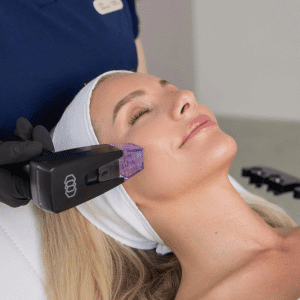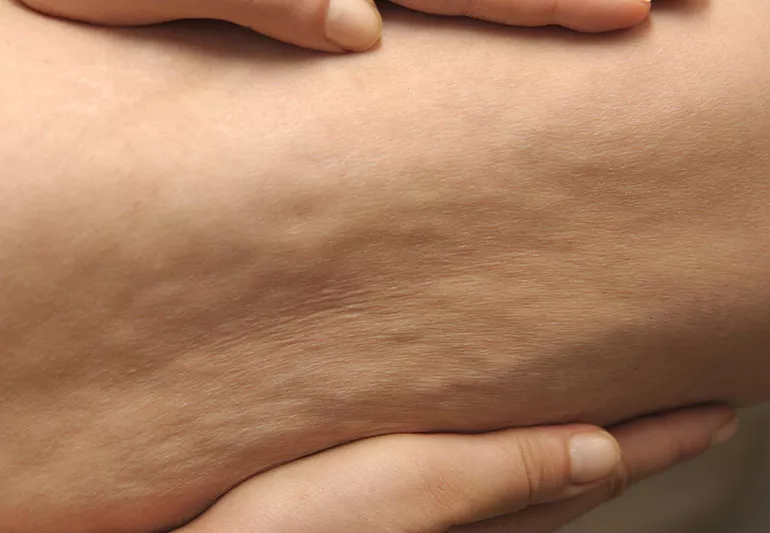
Cellulite: A detailed guide about dimpled or lumpy skin appearances known as cellulite exists for public information.
Cellulite affects various body shapes but mostly affects women. Cellulite exists naturally without harm and produces uneven dimpled skin on the thighs, buttocks, abdomen, and limbs of the human body. The condition negatively affects the self-assurance of people who experience it.
The Rasa Derm team provides scientific treatments that effectively minimise cellulite appearance while improving skin texture.
The dimpled appearance known as cellulite forms when fat deposits rise through the connective tissue beneath the skin surface to create the characteristic orange peel or cottage cheese texture. A structural issue exists in skin because multiple factors shape its condition rather than it being a disease or medical problem.
The severity of cellulite exists in three different grades that display soft, firm, or oedematous characteristics.
Grade 1 presents dimpling only when the epidermis is pinched, but no visible dimpling occurs otherwise.
Grade 2 shows noticeable dimpling while standing.
Grade 3 shows noticeable dimpling in both standing and lying down positions.
Several factors work together to create the development of cellulite. Each is examined in greater detail below:
Hormones, specifically oestrogen, insulin, noradrenaline, and prolactin, play a substantial role in cellulite development. The combination of reduced collagen production and fat storage due to oestrogen creates weaker connective tissue, which leads to more prominent fat cells.
Cellulite worsens naturally during ageing and specifically during life transitions such as puberty, pregnancy, and menopause.
- Thickness of the skin.
- Distribution of body fat.
- Circulatory efficacy.
- Hormonal sensitivities.
The development of cellulite becomes more likely regardless of fitness level and weight when one or more close relatives or the mother has the condition.
3. Inadequate Circulation And Lymphatic Drainage
Inadequate blood flow limits tissue oxygenation and nutrient delivery while preventing proper waste removal. The presence of pollutants together with fluid retention inside fat cells makes cellulite appear worse. Swelling and oedema make the dimpled texture worse because these conditions emerge from poor lymphatic drainage.
The septa serve as fibrous bands that link the epidermis to the muscle located beneath the skin. The bands tighten the skin while fat cells move upward, creating the characteristic puckered surface that defines cellulite.
The septae develop fibrotic properties with time, and fat cells expand, leading to deeper and more persistent dimples.
The visibility of cellulite becomes more pronounced due to certain life choices, including:
- Lack of physical exercise produces decreased muscle tone and circulation that causes fluid accumulation and fat growth in the body.
- A diet consisting mainly of sodium-rich foods combined with sugars and processed items leads to increased inflammation and fat accumulation and fluid retention.
- The skin loses its structural integrity, collagen degrades, and blood circulation decreases due to smoking.
- The application of tight clothing to affected regions can worsen cellulite by impeding blood flow and disrupting lymphatic drainage.
- When stress causes hormonal imbalances, the body stores more fat and reduces collagen production.
Treatments For Cellulite
Our treatment protocols combine noninvasive procedures with minimally invasive techniques to resolve cellulite root causes for achieving better skin texture.
The treatment protocols at our facility address the root causes of cellulite through non-invasive and minimally invasive procedures that handle fibrous bands along with fat pockets as well as poor circulation and collagen deterioration. The treatments aim to create a smoother, firmer skin texture that will last.
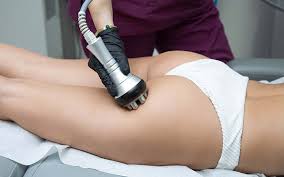
Radiofrequency (RF) Skin Tightening
RF skin tightening uses heat energy to target the deeper layers of the skin.
- Session Duration: 30-45 minutes
- Sessions Required: 6–8 sessions
- Gaps Between Sessions: Once every 1–2 weeks
- Results: Visible improvement in 4–6 weeks; continued improvement over 2–3 months
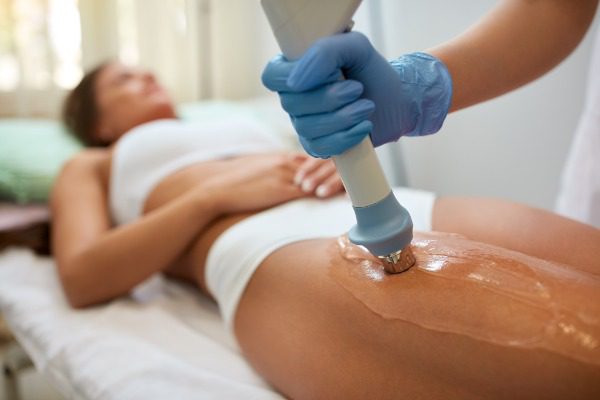
Acoustic Wave Therapy (AWT)
Acoustic Wave Therapy uses pressure waves to stimulate collagen production.
- Session Duration: 30 minutes
- Sessions Required: 6–10 sessions
- Gaps Between Sessions: 1–2 sessions per week
- Results In : Initial results in 4 weeks; optimal results in 8–12 weeks
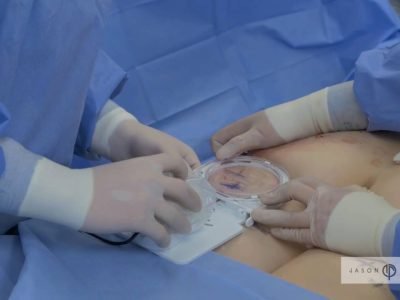
Subcision (Cellfina)
Subcision, also known as Cellfina, is a minimally invasive treatment.
- Session Duration: 45–60 minutes
- Sessions Required: 1 sessions
- Gaps Between Sessions: Not applicable (results last 2–3 years)
- Results In : Noticeable results within 3–7 days; optimal in 1–3 months

Injectable Cellulite Reducers (Collagenase Injections)
FDA-approved collagenase injections (like QWO) work by breaking .
- Session Duration: 15–30 minutes
- Sessions Required: 3 sessions
- Gaps Between Sessions: Once every 3 weeks
- Results In : Visible results in 6–10 weeks






